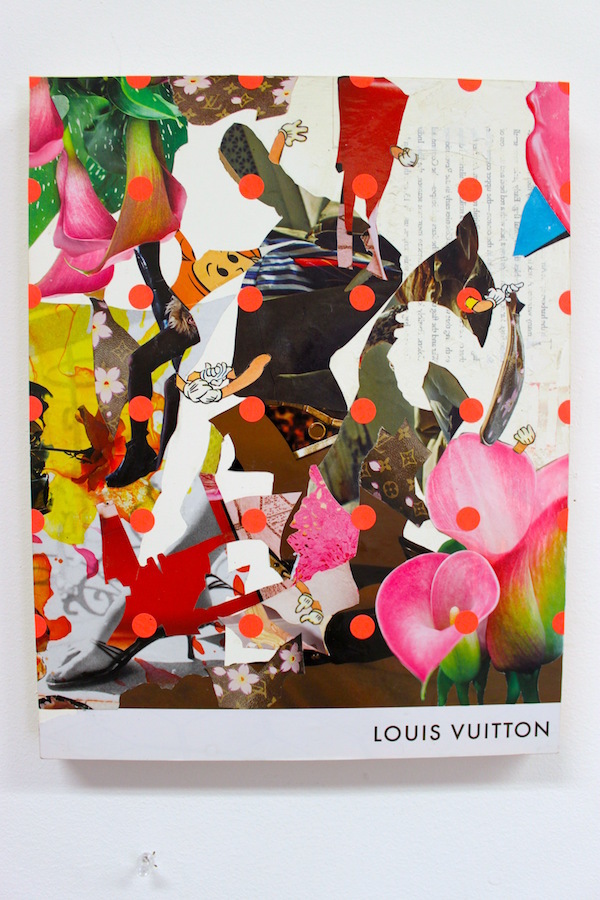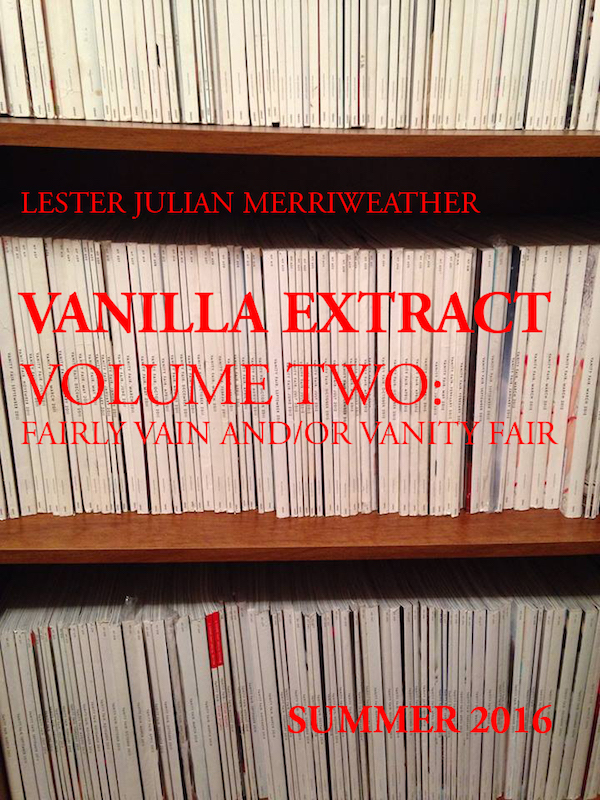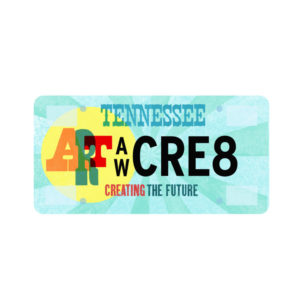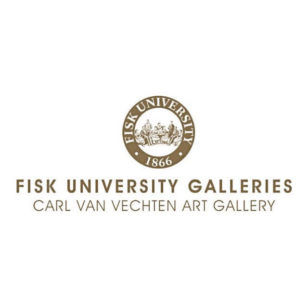INTERVIEW: LESTER MERRIWEATHER
APR. 21, 2016

INTERVIEW: LESTER MERRIWEATHER
APR. 21, 2016
Sara Estes: You are primarily a collage artist. How did you come to use ready-made images as raw material? Have you always done collage?
Lester Merriweather: As I was attending Skowhegan in 2002, I was in grad school and went there working on a lot of things digital, a lot of photography work. Somewhere during all that, when I had time to work and process things in that setting, I came back to simply wanting to draw. From that drawing came an extension of understanding imagery in a certain way, also understanding that drawing was really about line work. That interest in imagery and line work led to my wanting to pursue collage. I think collage has a really painterly element to it. It’s just a different way to go about that process. I’m using exactos instead of pens and pencils.
SE: When you’re making your collages, do you work on them one at a time?
LM: I work on several things at once. It can be incredibly cathartic, but it can be somewhat of a hindrance because I can get scattered. I’m always cutting collage, even when I’m watching a basketball game on TV or something like that.
SE: What’s a typical studio day like for you?
LM: I’ve got about a 10-15 minute drive to the studio. When I get here, I usually put on music. I like Kendrick Lamar, Kanye West, Jamiroquai. Lately I’ve been listening to a lot of sports radio, I’m a huge basketball fan. Gotta have some coffee. Most of the time, I’ll sit for a while and contemplate the work that’s in front of me. Then spend the day cutting collage and working on the collages. During the course of the day, I’ll switch focus to my commissions, like mural projects, or working on other proposals.
SE: Who are some of your biggest art influences?
LM: Early on, I was a humongous Basquiat fan. But the more I learned about his life and his story, my interest kind of waned because I couldn’t really relate. I still love his work though. As for the ones who inspire me to work currently, I’d say Ellen Gallagher, Gerhard Richter, Mark Bradford, and Wan Gechi Mutu.
SE: Formally speaking, why do you choose to use glossy magazine pages over, say, other types of paper ephemera like old newsprint?
LM: It boils down to the idea that people are attracted to a lot of the things they see in the pages of a magazine. So I’m paying attention to form and beauty in that way. Conceptually I’m working with such loaded imagery, that I have to figure out ways to address it in attractive manners. It helps to pull the viewer into the possibility of communicating with the work.
SE: So, you’re saying that masking a difficult message in something that, on the surface, is attractive, increases the likelihood that people will actually get the message?
LM: Yes. You catch more bees with honey.
 untitled, cut-paper collage, 12x12", 2015
untitled, cut-paper collage, 12x12", 2015SE: What draws you to magazines conceptually?
LM: Something that intrigued me early on, was when I would flip through the ads of the big September Vogue issue, it would be page 80 or 90 before I’d see a black person. And even then, it’d be the same handful of models, like Chanel Iman and Alek Wek, in all the ads. So it became more of a question about what that means.
SE: Your work comments on that idea beautifully. Specifically in the Vanilla Extract series where you removed white people from group scenes, leaving only the few African-Americans or other ethnicities in the image. It’s such a powerful visualization of the major lack of diversity.
LM: And that’s one of the important parts of it. People would like to say that those things are not really racist. But I’m not in the publishing room when these decisions happen. However, I’m very actively pointing out the lack of diversity that is an obviously conscious decision because it keeps happening. Interesting enough, that’s actually spilling over into a lot of other things I’m doing right now. In my other professional roles, I’m working to try to change the awareness of the lack of diversity.
SE: What are your thoughts on diversity within the visual arts?
LM: I can only speak to the art scene in Memphis. There have been countless times where it felt like I was the only black person in attendance. And when you think about Memphis being, demographically, the city that it is, it’s hard to imagine why the grants and resources that come down the pipeline don’t reach the black community. I’ve been working for the last 7 years to help Memphis get a better understanding of where they ought to be as far as their intentions go. Intentionality plays a very big role in the choices people make. You have to have a mindset that says ‘We are actively working toward changing this’ or else you are complicit with what is.
SE: Have you always lived in Memphis?
LM: I’m pretty much a lifetime Memphian. I went away for school and residencies, but otherwise I’ve been here.
SE: Do you feel like your work is tied to the city in any way?
LM: I don’t think so. Memphis is very convenient place for an artist to be because of the low cost of living here. And there’s a relatively supportive arts culture. It’s in its infancy stages, but for people who work in the arts, there’s a close-knit community. Plus, family is here and that’s more important to me than anything else.
SE: I’d like to talk a bit about your use of humor in your work. I love your play on words, your use of language and cheeky titles that have multiple, layered meanings. For example, your Vanilla Extract series, which was exhibited at Rush Arts Gallery, Russell Simmons’ space in NYC, and at the Cotton Museum in Memphis alongside video work by Kara Walker. There was also White(s) Only, your more recent exhibition at the University of Memphis’s Fogelman Galleries. How do you pick those titles?
LM: I think if I wasn’t an artist I probably would’ve been a comedian. I’ve always been cynical, even as a child. Humor and sarcasm are a way to address a serious issue like the racial dynamic in America, but that can’t be the only layer. Art has to have several layers to it. The tongue-in-cheek stuff is a way of bringing people in, but if there’s no substance behind that, then it wouldn’t matter.
 #0007-LVWD (from the Luxury House Drawing Suite) collage on board, 17x14, 2015
#0007-LVWD (from the Luxury House Drawing Suite) collage on board, 17x14, 2015SE: In White(s) Only, you painted giant renditions of paint chips of different shades of white house paint, which had some pretty horrific names. You also painted objects. What was the genesis of White(s) Only?
LM: One day during one of my many trip to Lowe’s, I was looking at the paints and one of them was “Fresh Cotton”. That hits me, so I figured I’d keep looking because it was interesting. Then I found others like “Colonial White.” But “The Great White Way” just really set the project in motion. I was amazed. Then it took a turn when I found “Navajo White” and I was like, whoa, this is just awkward. I mean, why would a person of color want Colonial White walls with Fresh Cotton trim?
SE: Absolutely! It’s shocking. That’s another thing I really admire about your work, the way you’re able to point out the banal, everyday instances of racism. It’s extremely important.
LM: It’s so very loaded anyway. I was doing some huge collages that were a sea full of jewelry with a tiny ship floating in it. The statement is that those jewels were mined from communities that have no idea the value of the resources they’re dying for have in other countries. These layers of exploitation happen a long time before they get to a glossy magazine. We have to retrace things that are realities in American culture that we haven’t really addressed in any meaningful way.
SE: So what’s coming up this year for you?
LM: I just curated an exhibition for ArtsMemphis called Assembled, which was a collaborative exhibition of 13 artists and 7 blank canvases that they all worked at very freely. The Downtown Memphis Commission just approved my proposal for a mural, and I have an Urban Arts commission mural that I’m working on, as well. In June of this year, I will be unveiling Volume 2 of my Vanilla Extract series at Crosstown Arts in Memphis. This one focuses directly on Vanity Fair.
 ad for VANILLA EXTRACT: VOLUME TWO- FAIRLY VAIN AND/OR VANITY FAIR Exhibition, 14-19 June 2016, Crosstown Arts
ad for VANILLA EXTRACT: VOLUME TWO- FAIRLY VAIN AND/OR VANITY FAIR Exhibition, 14-19 June 2016, Crosstown Arts* All images of courtesy of the artist.
Lester Julian Merriweather (b.1978) is a Memphis-based visual artist. He attended the Skowhegan School of Painting & Sculpture. He holds an MFA from Memphis College of Art and a BA from Jackson State University.
Merriweather has exhibited extensively throughout the U.S. at various venues such as the Studio Museum in Harlem, NYC, TOPS Gallery, Powerhouse Memphis, Diverseworks in Houston, and the Contemporary in Atlanta. He has also exhibited abroad at the Zacheta National Gallery in Warsaw, Poland.
He recently served as the Curatorial Director of the Martha & Robert Fogelman Galleries of Contemporary Art at the University of Memphis and on the Board of Directors for Number, Inc. independent journal. He also served as a member of the ArtsMemphis Artist Advisory Council and the artsAccelerator Grant Panel.
He currently serves on the Collabortory Memphis project and on the Advisory Panel for the CLVT.
Sara Estes is a writer living in Nashville, TN.


